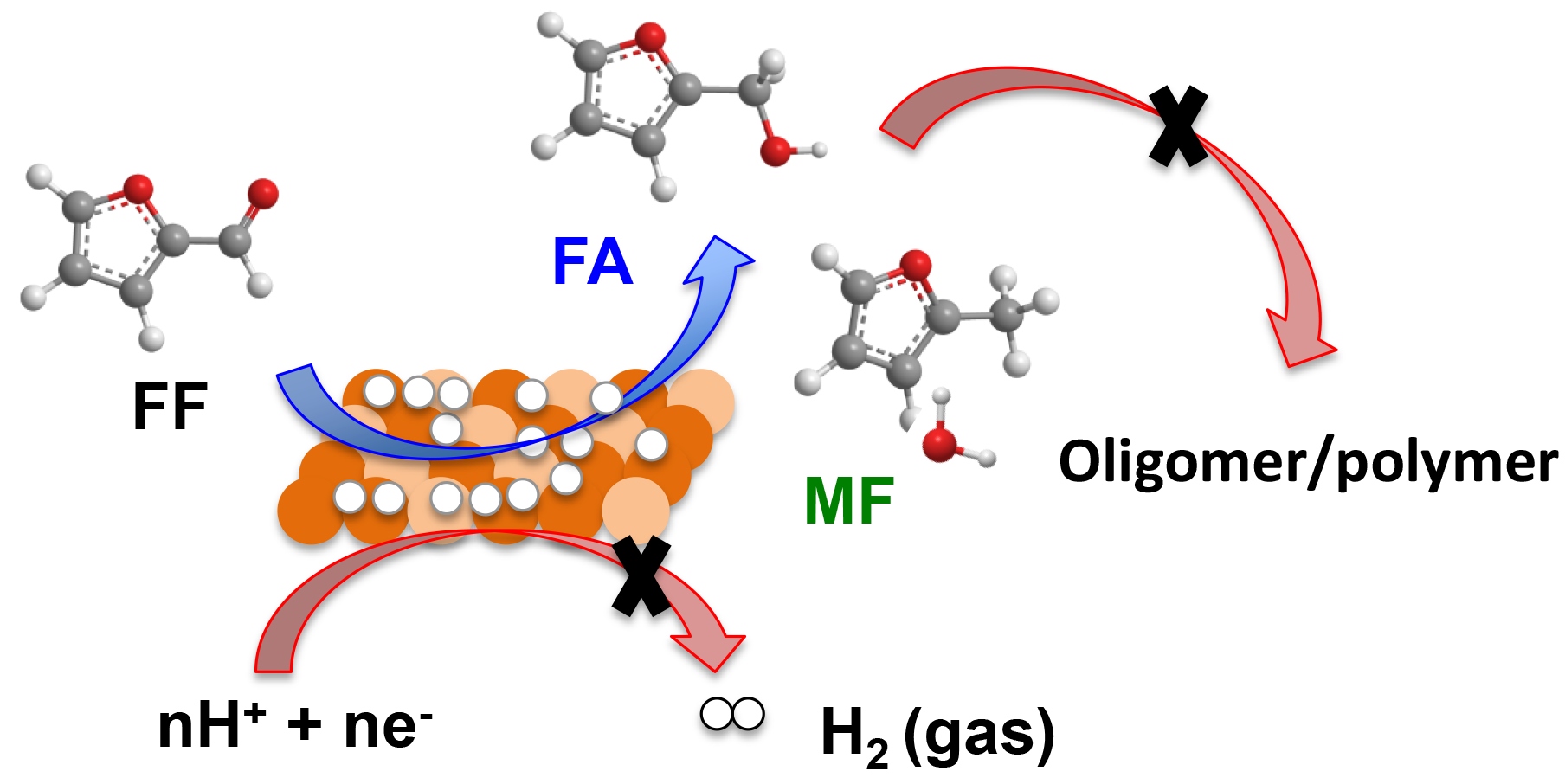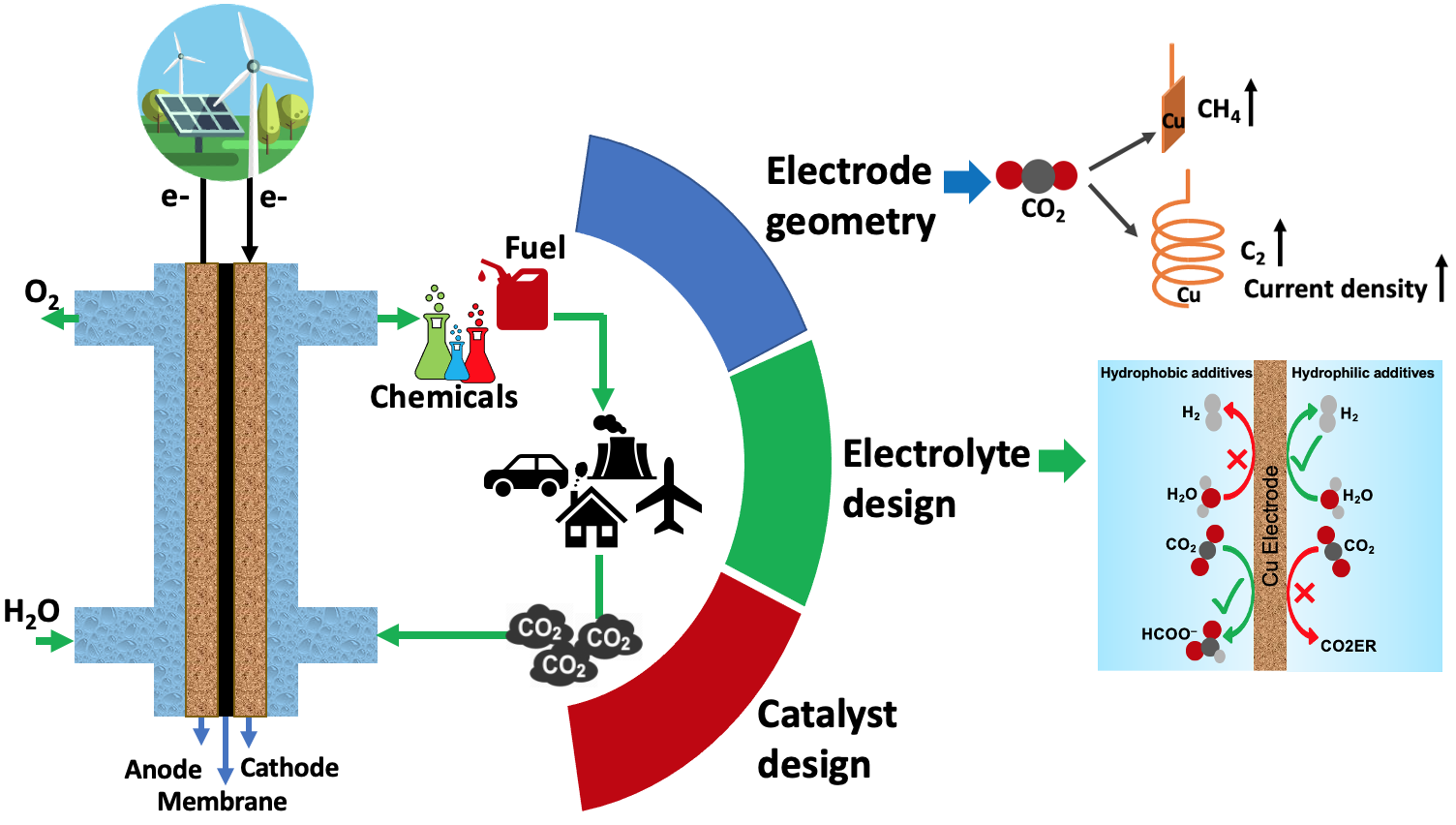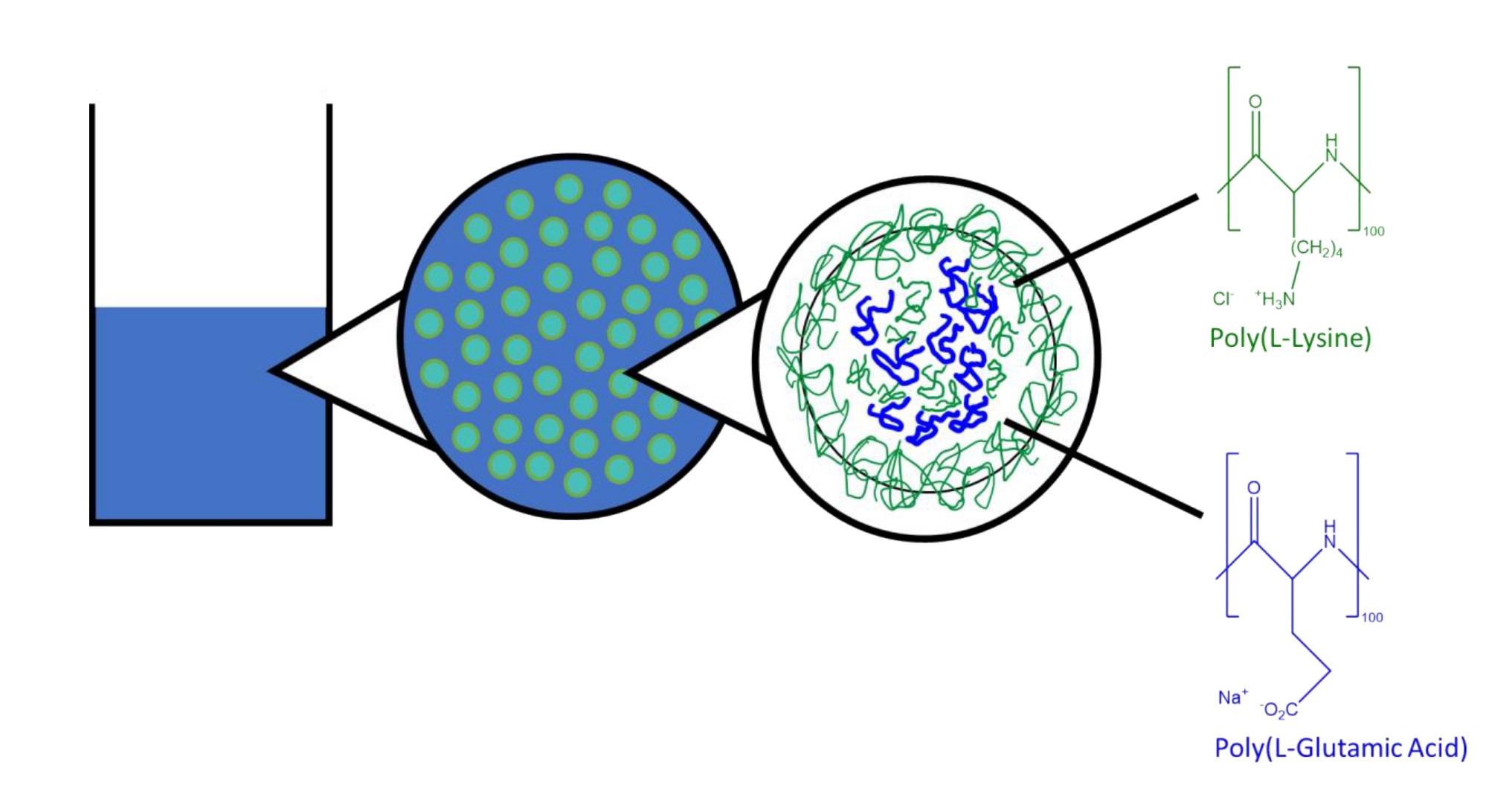Research
We approach green chemistry and energy applications utilizing:
- Electrochemistry
- Catalysis
- Alternative Solvents
- Sustainability Methods
Our interests range from electrocatalysis of biomass-derived materials to development of green and sustainable engineering methods for the production of fine chemicals and pharmaceutical intermediates to the recovery of fission products using electrochemistry and ionic liquids and many more interests...
Previous research projects page
Green Chemistry Interests:
Holistically re-evaluate the way we make fine chemicals, biomass-derived chemicals and pharmaceutical intermediates through the development of electrocatalysts, green synthesis and separations methods and use of emerging feedstocks such as biomass and shale gas.
Energy Interests:
Re-examine how we handle alternative energy resources such as biomass-derived fuels and nuclear wastes through the use of electrochemistry, ionic liquids, catalysis and sustainability methods.
Current Ongoing Projects:
Electrochemical Hydrogenation and Hydrogenolysis of Biomass Derived Species
Furfural (FF) is a biomass-derived chemical that is produced in the Quaker process and from the under-utilized C5 stream in a biomass refinery. FF is a platform molecule as it is a reactant in the production of several desirable chemicals. Two chemicals of interest are furfuryl alcohol (FA) and 2-methylfuran (MF), which are considered an adhesive intermediate and biofuel candidate, respectively. FA and MF are produced through the electrochemical hydrogenation and hydrogenolysis (ECH) reactions, respectively, when using FF as the reactant.
In our lab, we investigate the kinetics and the mechanisms for the ECH reactions of FF and HMF. We do this by using batch electrolysis experiments to observe macroscopic trends and by using operando spectroscopic techniques to further investigate the solid-liquid interface. We are also interested in the potential-dependent fouling on copper foil electrodes during ECH of FF in strong acid.

To learn more, please click the links below which lead to some of our recently published works:
https://pubs.rsc.org/en/content/articlelanding/2021/re/d1re00216c
https://doi.org/10.1021/acscatal.9b05531
https://doi.org/10.1016/j.cattod.2018.09.011
https://doi.org/10.1002/ente.201800216
https://doi.org/10.1021/acssuschemeng.6b01314
https://doi.org/10.1021/acs.energyfuels.2c01955
https://doi.org/10.1039/D3GC02222F
CO2 Electroreduction Using Cu-based Catalysts
Carbon dioxide is an abundant waste product and a greenhouse gas. Carbon dioxide can be converted to fuels and chemicals electrochemically, but this process suffers from many challenges. These challenges include poor product selectivity (16 possible products on copper catalysts), reaction competition between hydrogen generation and CO2 reduction (where hydrogen generation becomes a parasitic reaction consuming the electricity intended to be used for CO2ER), catalyst stability, and slow kinetics. Several strategies have been proposed to address these challenges. Our group has identified the catalyst morphology, electrode geometry, and electrolyte composition as key factors that impact both activity and product selectivity. We have found that the electrode geometry significantly affects the current distribution on the electrode surface and consequently, alters the product selectivity and activity. Electrolyte composition is another important factor in CO2ER. Aqueous electrolytes are the most common electrolytes for CO2ER due to their low cost, abundance, eco-friendliness. However, the CO2 solubility in aqueous electrolyte is low. Using ionic liquids additives in aqueous electrolytes is a promising method to enhance the selectivity and activity due to their unique properties such as high CO2 absorption capacity and high stability. We were able to enhance the selectivity of Cu catalysts toward formate (38.7% FE) at -0.92 V vs. RHE by using an ionic liquid additive ([BMIM][NTF2]) in aqueous electrolytes. This enhancement is due to the high hydrophobicity and high CO2 absorption capacity of [BMIM][NTF2]. We also observed that ionic liquid additives affect the local environment at the electrode interface. In-situ spectrometry technique showed us that the presence of additive ions at the electrode surface affect the adsorption of H2O and CO molecules impacting the selectivity and catalytic activity of the CO2ER reaction.

To learn more, please click the links below which lead to some of our recently published works:
https://doi.org/10.1021/acs.iecr.9b03762
https://doi.org/10.1016/j.electacta.2020.136787
https://doi.org/10.1016/j.cej.2021.131303
https://doi.org/10.1021/acscatal.3c00035
Recovery of Critical Materials from Waste to Energy (WTE) Ash
Municipal Solid Waste (MSW) has been being produced every day and everywhere such as home, business, industry, and so on in USA. To minimize the amounts of landfilled MSW and to recover some energy, Waste to Energy (WTE) facilities have burned MSW and generated electricity, leaving WTE ash. WTE includes concentrated rare earth elements and precious metals which have literally limited supply and significant value as it is hard to extract from the nature but is significant for use in the high tech & electronics industries.

Our goal is to develop a green but efficient separation process which can separate the rare earth metal and previous metals from WTE ash. For this, we are investigating the ionic liquid as a separation solvent since the physical and chemical properties of ionic liquids are considerably tunable by manipulating the combination cations anions. Continuously, with the advantage of the novel electrochemical properties of ionic liquids, we are investigating a way of selective electrochemical separation to further separate the rare earth metal or precious metals which were not able to be separated through the chemical extraction process.
Ionic liquid-based electrolytes for lithium metal batteries
Lithium-ion batteries have been the dominate means of rechargeable energy storage since being commercialized in 1991. Rapid advancements in modern technology have increased the demand for high capacity and safe energy storage. For this reason, lithium metal batteries are among the leading candidates to succeed lithium-ion batteries for next generation energy storage. The lithium metal battery has the advantage of a larger theoretical capacity by the means of weight and volume. However, for commercialization of lithium metal batteries, not only concerns of safety with the dendrite formation, but also the poor cycling stability with the high reactivity of lithium metal itself need to be addressed.

In this work, we are approaching these problems by designing Ionic liquid-based electrolyte systems. Ionic liquids have novel, tunable chemical and electrochemical characteristics such as non-flammability, wide electrochemical window, moderate conductivity, and so on. Our goal is to design and understand the ionic liquid-based electrolyte which could operate at the extreme condition found in space, especially toward extremely low temperature, at least -40oC. We are investigating the fundamental physical and electrochemical properties of the ionic liquids, also the interphase between the electrolyte and the electrode surface, and ultimately the relationship of the properties with the safety and the cycle performance.
This project is a collaborative effort funded by NASA. To learn more about the research efforts of our center, click here:
https://batteries-for-space.ccny.cuny.edu/
To learn more, please click the links below which lead to some of our recently published works:
https://doi.org/10.1021/acs.iecr.2c00498
Electrochemical dehydrogenation of liquid organic molecules for hydrogen storage and transport
Hydrogen, a versatile energy carrier and important chemical, holds immense potential for a sustainable and green future. However, hydrogen is the world’s smallest molecule and can easily diffuse, making the storage and transportation of it challenging using the conventional methods such as compressed gas and liquified hydrogen storage. One of the most promising alternatives to store and transport hydrogen is via liquid organic hydrogen carriers (LOHC). LOHC is attractive method for hydrogen storage and transport due to its chemical properties, which allow using existing infrastructures. Hydrogen can be “loaded” to an organic molecule through hydrogenation process and be “released” through dehydrogenation process. Electrochemical process for these two processes offers an opportunity to utilize renewable electricity for storing and transporting hydrogen and therefore accounting for low carbon footprint in comparison to the existing methods.
.jpg)
Our group focuses on studying the electrochemical dehydrogenation (ECD) reactions to release hydrogen which are often more challenging than electrochemical hydrogenation reactions. The goal of our group is to study the kinetics and reaction mechanisms for ECD of various LOHC molecules.
Polypeptide Complex Coacervates for CO2 Capture
Complex coacervates are created from oppositely charged polyelectrolytes in solution. Here, a spherical structure forms with one polyelectrolyte on the surface. The resulting solution becomes two phases: one phase polymer rich and the other phase polymer poor. Recent research has studied the encapsulation properties of coacervates. In our lab we study coacervates of Poly(L-Lysine) and Poly(L-glutamic acid) and their ability to capture the greenhouse gas, carbon dioxide. While the ammonium groups on the Poly(L-lysine) promote coacervation, we are exploring the coacervates under basic conditions in which some of the ammonium groups will deprotonate to become amine groups. When sparged with CO2, these amine groups react to form carbamate.

Funding Sources:
Department of Energy Early Career Award
Nuclear Regulatory Commission
Grove School of Engineering Endowment
CUNY Junior Faculty Research Award in Science and Engineering, Sloan Foundation
PSC-CUNY
MSRDC
ECS Toyota Young Investigator Fellowship
DOE-SBIR
DOE ARPA-E
Giner, Inc.
NASA
NSF
NSF ECO-CBET
Sloan Foundation
DOE-FAIR
